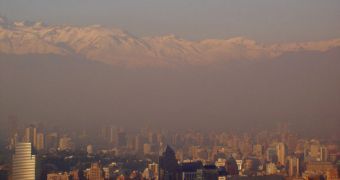Researchers at the University of California in Berkeley (UCB) say that the common idea held by poor and developing nations, that reducing greenhouse gas emissions equates keeping poverty levels high, is a misconception that needs to be fought.
The developing world is currently emitting increasing amounts of pollution each year, Countries such as China, India and Brazil are responsible for a large share of all emissions registered around the world.
But global efforts to reduce emissions would be unfair if they asked these countries to stop their development and reduce pollution levels, seeing how the developed world caused the current situation.
In other words, it would be hypocrisy by the book. So researchers are looking for options to solve both poverty crises and reduce pollution at the same time. The UCB team recently made important progress in this direction.
Graduate student Christian E. Casillas and professor Daniel M. Kammen give the example of small area in rural Nicaragua, encompassing some 172 households, were an innovative approach to using energy was applied.
What the method shows is that cost-effective methods of reducing poverty and pollution at the same time do exist and that, moreover, they can be put into practice if the political will to do so exists.
The procedures at work in Nicaragua were developed by the country's Ministry of Energy & Mines and the nonprofit organization blueEnergy, Science Blog reports.
The UCB team published details of the approach in the latest issue of the top journal Science. Two villages, Orinoco and Marshall Point, have been taken of the nation's power grid entirely.
Casillas says that their entire energy needs are obtained from diesel generators, and adds that an important step forward was taken when people stopped being taxed by the appliances they owned.
Since their homes had no energy meters, people with few electronic devices were encouraged to consume a lot of energy, leaving their TV and radios on even when they were not using them.
After meters were installed, power consumption dropped by 28 percent, as did average electrical bills. An addition 17 percent cut was achieved when blueEnergy started its efficiency campaign.
The company gave two compact fluorescent light bulbs to each individual that brought two regular light bulbs at collection center. This reduced the power demand considerably. Overall, a 47 percent reduction was achieved at a local level.
“What we are saying is, if you’re thinking about some of the lowest hanging fruit to lower greenhouse gas emissions, rural communities should be one of the first places you look for making small but very cheap carbon reductions,” Casillas explains.
He adds that similar, diesel generator-based micro-power grids can be found in the thousands, especially in countries such as China and India, which are responsible for vast overall GHG emissions.
“They’re dirty, have high emissions, high energy costs and questionable reliability, so targeting these microgrids has the potential for improving access to energy services for those communities while at the same time, for the dollars invested, getting greater reductions in carbon emissions than you might get investing in similar measures where the cost of energy is cheaper, such as in the cities,” the expert says.
“We hope that this paper will spur a wave of efforts to build similar community level carbon abatement and energy service tools, so that communities often ignored or lumped together as ‘those billions without modern energy’ can create their own locally appropriate development goals, and groups working with them can develop energy solutions, not just efforts to disperse hardware,” Kammen adds.

 14 DAY TRIAL //
14 DAY TRIAL //